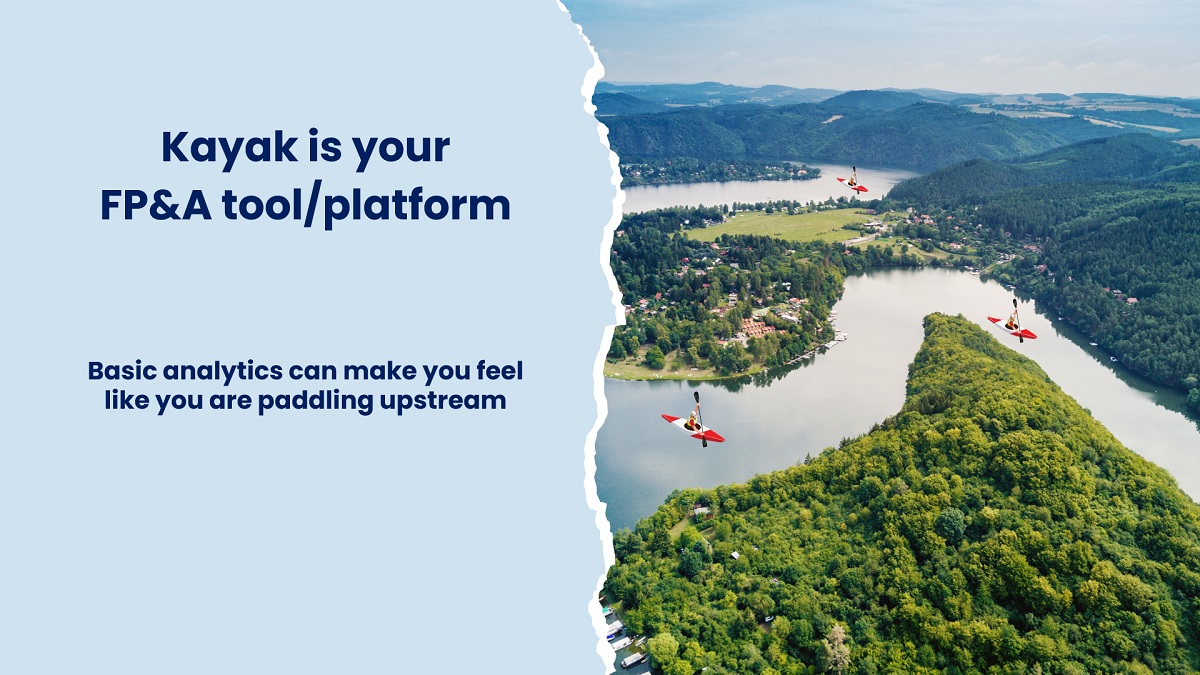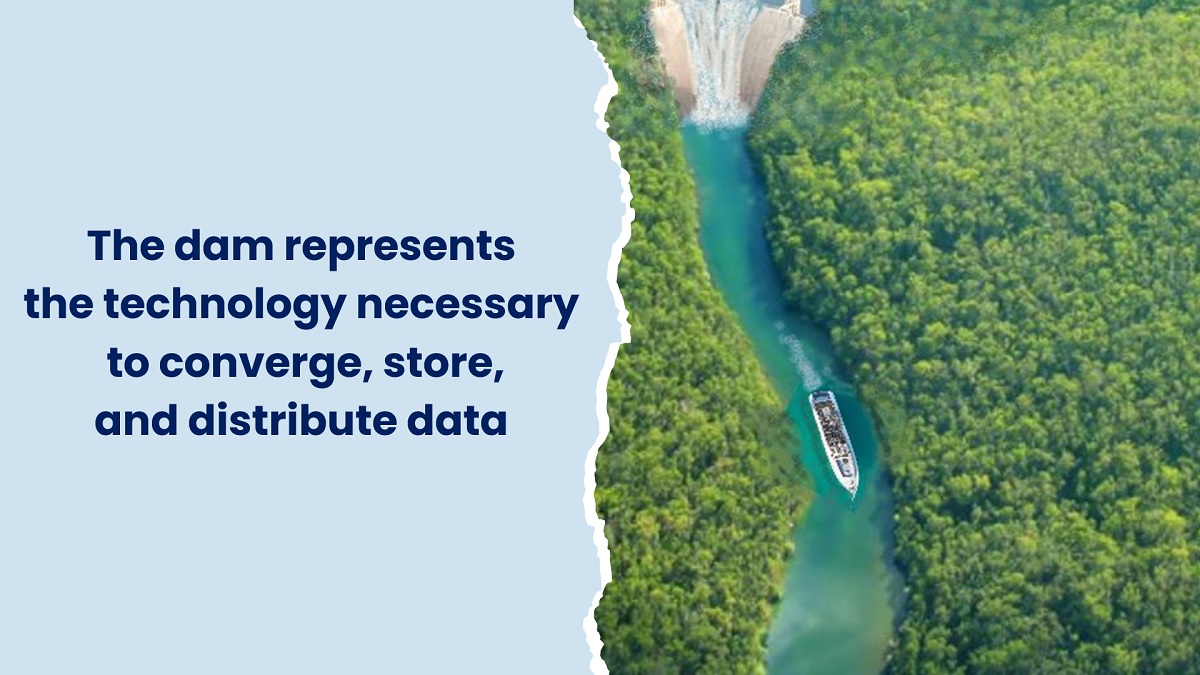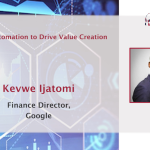The dusk of Management Taylorism is the dawn for the strategic CxO. Constant cooperation, communication and...

Whether you characterise your leanings for FP&A transformation as ‘bold and bleeding edge’, ‘slow and steady’, or somewhere in between, FP&A professionals all share one common denominator – more value-creation should be made. After talking with many peers, I realised that a litany of common barriers stand in the way of this value-oriented progress. Often cited impediments include technology debt, misaligned processes, data silos/inaccessibility, and lack of automation. At the same time, we are seeing the early signs of a technological revolution that will most likely have a rapid and real impact on FP&A practitioners.
In this article, we will break these hurdles down and, using ‘known’ advancements with a touch of creative vision, try to paint a picture of what could be.
Today: Common Challenges
I will use a metaphor to illustrate today’s landscape and the challenges surrounding us. Imagine a river system. Not just a single river but many smaller channels surging through a mountain pass.
Let’s say the headwater represents the goal – actionable and data-driven insights. You, an FP&A professional, are in a sturdy, albeit diminutive, kayak and paddling upstream. The fact that you are in a kayak in choppy water is already a problem, but the counter-current forces you to exert great energy just to stay afloat. The kayak is your FP&A tools/platforms.
According to recent FP&A Trends research, the majority of companies acknowledge a deficit of information when it comes to their planning/analytics/reporting platforms¹. Moreover, they often rely on legacy and non-FP&A-oriented technology to perform their jobs. As a result, basic analytics can be likened to paddling upstream (i.e. pulling, manipulating, formatting, etc.). Data wrangling consumes valuable time and leaves little for deeper analysis, while a lack of automation further hinders data’s accessibility. If the kayak is your platform, the paddle is your apparatus for tackling the work. In this example, a paddle is only as good as a rower. In other words, if automation is lacking, you do all the work, including non-value-adding exercises.

Figure 1
Looking over your shoulder, you see a handful of other kayaks with familiar faces, also straining for forward progress. These folks, your friends in operations, accounting, and IT, are struggling but in separate, parallel channels. While their struggle and tactical goals might not totally overlap with yours, they suffer from the same symptoms. The ‘separate channel’ imagery signifies how various organisational entities traffic in ‘their’ siloed datasets, unaware that relevant, complementary data might exist one or two channels away. It also symbolises how many companies with apparently the same enterprise-level goals have separate processes that may miss out on productive collaboration and create friction and agency costs.
Let’s take another example. At one of the companies I have worked for before, I was dumbstruck to learn that several verticals within the same company had access to salient data sets (in this case, customer/sales/channel data) that enabled actionable go-to-market decisions when these points were coupled with our financial data. In other words, merging these data would enable the creation of a profit cube, breaking down profitability across a number of dimensions. To address this, we established an ‘Analytics Roundtable’, where all parties knew the other’s data availability. Until that point, we were missing out on the symphony of data synthesis that could take place once silos were broken down.
I realise my choice of metaphor to represent FP&A-related challenges might seem bleak. You may say that “not all organisations face these obstacles equally”. That’s fair. I personally have not encountered all these challenges so acutely and simultaneously. But the aim here is to adequately capture the myriad of real headwinds many FP&A professionals confront. With that said, are we to just grit our teeth and suffer through this indefinitely? Obviously not. I am certain many of you are setting aside precious time to brainstorm, roadmap, and implement solutions to take these challenges head-on. Like you, we have our eyes peeled for tried-and-true best practices, emerging technologies, and opportunities for inter-departmental collaboration.
Instead of talking too much about the present, I’d like to cast a vision for what could be. Why? Because it’s fun (at least for nerds like me). But more importantly, it reorients our mindset. If we are to accelerate our efforts toward value creation, we need to assume an expansive posture that is open to leaps in technology as they present themselves. Doing so ensures that we don’t fall behind or entrench ourselves in a scenario that is too rigid or incapable of adaptation.
Tomorrow: What Could Be
Back to the metaphor. Now imagine that at the headwater, there is a dam. It has fully regulated the flow of water downstream. It also directs the water, ensuring it gathers into a single, contiguous river. The dam represents the technology necessary to converge, store, and distribute data. This could be achieved using off-the-shelf iPaaS solutions or home-grown data warehouses brought to life using APIs. Regardless of the actual technology, we can funnel all enterprise data (e.g. financial, operational, sales) and relevant external data (e.g. macro-indicators, industry trends) into one place. Dams are also able to harness the power of the water, so, in our example, we are not only converging data, but we are cleaning, aligning, and transforming data. As a result, we get a reliable semantic layer for analysis. Today’s technology can bring data together, but as Artificial Intelligence (AI) continues progressing, we should be opportunistically aware of how it could reduce the human intervention necessary to acquire, structure, deliver, and QA that multi-sourced data.

Figure 2
Now we have a dam controlling and merging the river and can go downstream. This time, we’ve got a large speedboat instead of a kayak. Unlike the narrow kayak, the speedboat is not at risk of capsizing. More importantly, it has an engine, which enables the driver to shift focus from paddling to steering. In the same way, modernising our toolkit for planning, analytics, and reporting (i.e. ever-improving EPM platforms) allows for the automation of manually-intensive activities and shifts focus to synthesising insights from our data. Fortunately, the boat is big enough to accommodate our colleagues across the enterprise – symbolising collaboration that is otherwise absent short of an enterprise-wide platform.
The boat also comes equipped with self-driving capability. This would be AI. Now, the boat can navigate through the water, intelligently missing hazards and finding more optimal paths to the goal of actionable insights. Much the same, weaving AI into our platforms means that we have help. Out of the many potential use cases, a few envisioned below are particularly exciting:
- Correlated pattern recognition (e.g. identifying relationships between disparate datasets)
- Generative AI (e.g. query our data for hotspot/exception flagging)
- Price optimisation engines
- Advanced Predictive Analytics/planning (e.g. pairing external leading indicators with internal trended financials for forecasting/Scenario Analysis)
- Competitive benchmarking and asymmetries identification
Final Thoughts
Elements of this vision are obviously a bit abstract but hopefully serve as a mental model or mode of thinking as expectations for FP&A’s role continue to expand. Being poised to embrace emerging technology will ensure we bridge the gap between the present and the potential. Through a spirit of open-mindedness and a willingness to leverage the tools of tomorrow, we can turn the once-daunting rapids of data into a flowing current of actionable insights. In turn, it will help us propel our organisations towards a future where FP&A stands not just as a recorder of performance but as a driving force in shaping it.
References:
¹ GOBIN, H., MELNYCHUK, L. “Intelligent Transformation with the FP&A Trends Maturity Model: Mastering Leadership, Skills and Business Partnering”: FP&A Trends Research Paper. 2023. https://fpa-trends.com/fp-research/fpa-trends-research-paper-2023-intelligent-transformation-fpa-trends-maturity-model
Subscribe to
FP&A Trends Digest

We will regularly update you on the latest trends and developments in FP&A. Take the opportunity to have articles written by finance thought leaders delivered directly to your inbox; watch compelling webinars; connect with like-minded professionals; and become a part of our global community.






